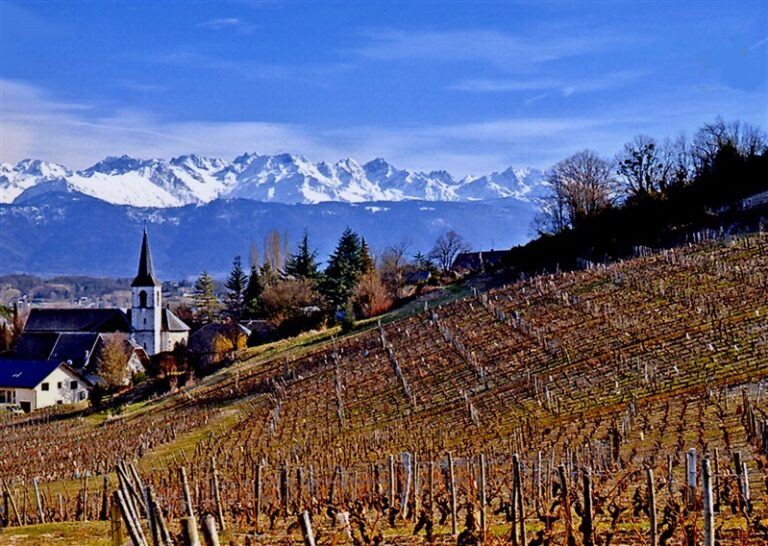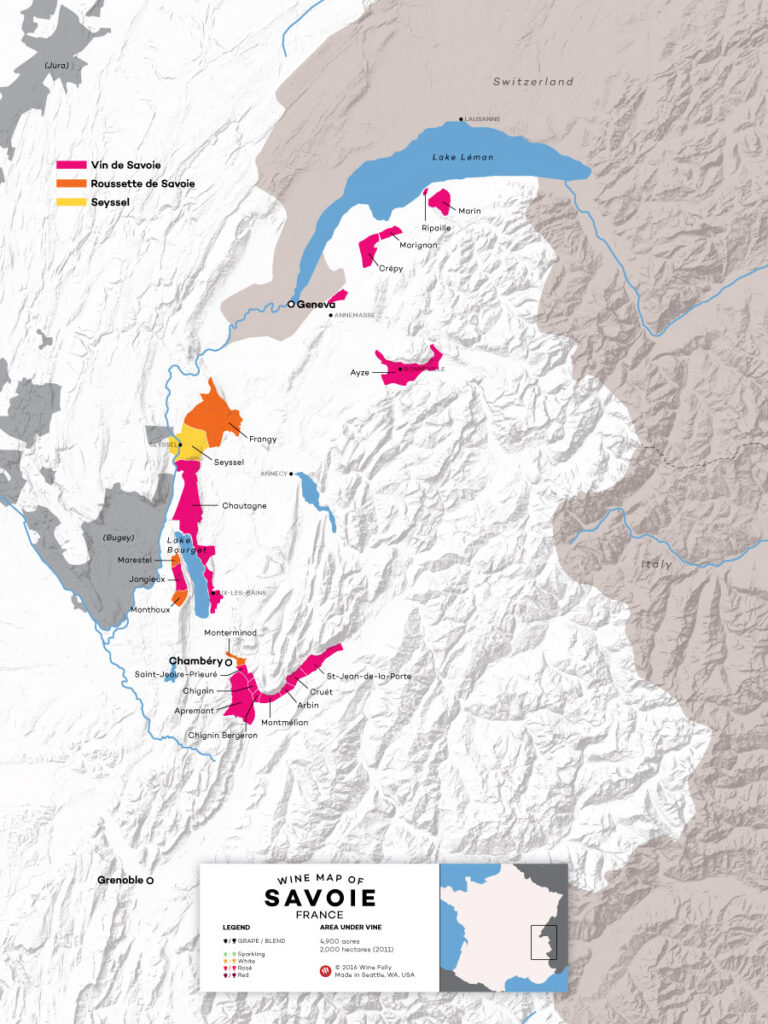Tucked into the French Alps near the Swiss border and famed Lake Geneva, lies the small, bucolic wine region of Savoie (Sav-Wah). Its natural beauty and alpine activities make it a popular tourist destination. And as such, almost all of its wine is enjoyed locally; only 5% is exported. Whites reign supreme here are similar in style to neighbouring Switzerland: crisp, delicate, ethereal and food-friendly.
Savoie accounts for less than 0.5% of French wine produced, with only 2,000 hectares under vine. As with many Alpine appellations, wine production developed in relative isolation. Unique, indigenous varieties abound, namely Jacquère (50% of plantings), Altesse, Chasselas and Mondeuse, alongside more familiar grapes like Roussanne and Pinot Noir. Vineyards are widely dispersed amongst the foothills of the Alps and the region’s 14 named Crus are scattered throughout the territory. These isolated sub-regions have varied topography and soils, though they all share a Continental climate that’s greatly influenced by elevation and local lakes and rivers. Though definitely a ‘cool climate’, south facing vineyards and the moderating effects from the various bodies of water ensure grapes here ripen fully each year. Historically, Savoie vintners often chaptalized their wines (i.e., added sugar to achieve higher degrees of alcohol), but with global temperatures rising and consumers looking for lower alcohol wines, the practice is used less and less.
One of the more important Cru (subregions) of the Vin de Savoie appellation is Chignin. Chignin wines may only be produced in the village and commune of Chignin, which lies on the southwestern side of the Bauges mountains in the Combe de Savoie – a deep valley that runs for 40km between the winter resort town of Albertville in the northeast and Montmélian in the southwest

These wines tend to have slightly more fruit, weight and concentration than those from farther north. The Cru is essentially one steeply-sloped vineyard that sits atop soils rich in clay and limestone. Jacquère (Jah-Care) is the primary grape here. It grows extremely well in this climate, especially when planted in limestone and marl. It’s high acidity produces elegant, vibrant wines with notes of pear, white peach, grapefruit and often subtle floral/mineral characteristics.



